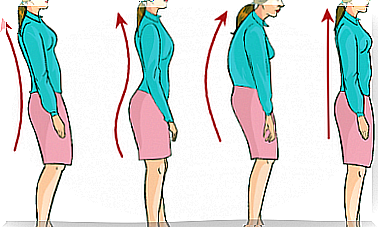What Drugs Help The Treatment Of COPD?
Chronic obstructive pulmonary disease COPD is one of the leading causes of morbidity and mortality in the developed world. It affects 9.1% of the general population aged between 40 and 69 years, and therefore, it is a public health problem.
The main risk factor for this disease is tobacco use. In fact, 90% of COPD patients are smokers. However, genetic and other environmental factors also play a role in its development. Although with a less important role than tobacco.
Let’s see what COPD treatment looks like, what its goals are, and other interesting questions.
The goals of COPD treatment
To treat this disease it is necessary to resort to the use of drugs and, when necessary, oxygen. In general terms, the objectives are:
- Decrease mortality.
- Relieve and treat symptoms.
- Avoid progression of the disease.
- Improve the quality of life of patients.
Pharmacological treatment seeks to reduce symptoms and reduce the number of complications of the disease. This is because none of the existing medications have been shown to modify the main characteristic of COPD: the progressive deterioration of lung function.

Pharmacological treatment: bronchodilators
In general, COPD patients improve clinically if they use bronchodilators. However, in most cases it is not a significant functional improvement. They aim to relieve dyspnea and improve exercise tolerance.
There are three groups of bronchodilator drugs for treating COPD:
- Methylxanthines.
- Anticholinergics.
- Beta-2-adrenergic agonists.
These drugs can be administered by different routes, although inhalation is the one that has the most advantages. These advantages respond to its rapid onset of action since it has fewer side effects.
Anticholinergics
Anticholinergics are good bronchodilators, they have their effect on the entire bronchial tree, although greater in the proximal airways. These drugs act by blocking muscarinic receptors in bronchial smooth muscle, producing bronchodilation.
An example of an anticholinergic, marketed in Spain is ipratropium bromide. It is important to bear in mind that it should not be used for the immediate relief of dyspnea, since its onset of action is after 20 or 30 minutes.
Beta-2 agonists
Beta-2 agonists are fast-onset of action and are administered by inhalation (terbulin, salbutamol, and formeterol). These drugs are the treatment of choice for dyspnea attacks due to their rapid action.
It is important to bear in mind that in dyspnea crises they must be administered in higher doses and frequency than in the stable phase.
Methylxanthines
The use of methylxanthines has been gradually decreasing since the introduction of new bronchodilators. This is due to its drawbacks in relation to other bronchodilators:
- Weak bronchodilator effect.
- Dosages must be adjusted to each individual.
- The variability existing between the different individuals in terms of its absorption and clarification.
- Its side effects, among which the gastrointestinal ones stand out. For example, anorexia, diarrhea and epigastralgia. Also, the cardiovascular consequences such as hypotension and neurological such as anxiety.
Corticosteroids
In COPD, it is common to find inflammation in the airways characterized by the presence of macrophages, neutrophils, and cytotoxic T lymphocytes.
This inflammation, initiated by tobacco, is likely to play a key role in the origin and development of the disease.
As a consequence of this inflammatory process , the use of corticosteroids (glucocorticoids) may be suggested. However, the use of corticosteroids has not been shown to improve the natural history of the disease. Therefore, it is often recommended for patients with severe COPD.

Other treatments
In addition to bronchodilators and corticosteroids, it is recommended that COPD patients receive the influenza vaccine annually and the pneumococcal vaccine every six years.
This is because COPD can be made worse if you have the flu or pneumonia. The objective of the administration of these vaccines is to reduce the frequency and intensity of COPD attacks.
On the other hand, continuous home oxygen therapy (OCD), together with the elimination of tobacco, constitutes the only measure that has been shown to improve the survival of people with COPD. This helps reduce the feeling of suffocation that patients feel when performing daily tasks.









